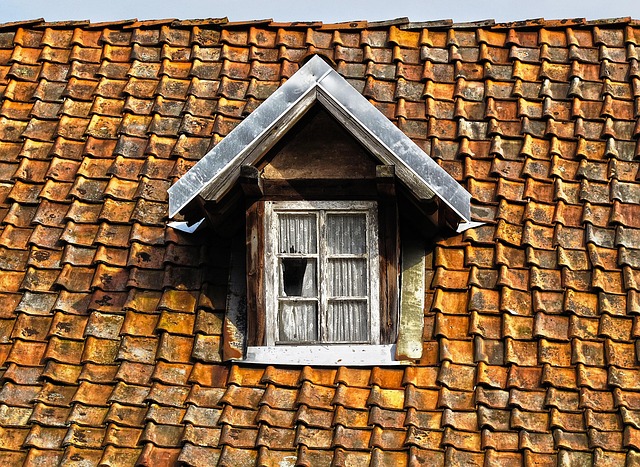Roof perimeter sealants are vital for protecting buildings from water damage, mold growth, and structural issues by filling gaps and cracks. Durable roofing materials like metal flashings and shingles with coatings offer superior resistance to water intrusion and extreme weather. Professional application of edge treatments involves cleaning the roof and using techniques like brushing, rolling, or spraying to create a smooth, even layer. Regular inspection and reapplication every few years ensure optimal performance; durable materials reinforce the system for peak protection under harsh conditions.
Incorporating protective edge treatments with roof perimeter sealants is an essential step in safeguarding your home or building from water intrusion and structural damage. This comprehensive guide explores the significance of these sealants, offering an insightful overview of their functions and benefits. We’ll delve into various treatment types, emphasize the choice of durable roofing materials, detail application methods, and provide long-term maintenance tips for optimal sealed roof perimeters. Discover how these strategies ensure longevity and protect your investment.
Understanding Roof Perimeter Sealants: Why They Matter
Roof perimeter sealants play a crucial role in safeguarding your home or building from potential water intrusion and damage. These specialized products are designed to fill gaps, cracks, and seams around roof perimeters, creating a robust barrier that prevents rainwater from seeping in. Understanding the importance of a comprehensive roof perimeter sealant is vital when it comes to ensuring the longevity and integrity of durable roofing materials.
Water penetration can lead to significant issues, such as mold growth, structural damage, and reduced energy efficiency. Effective sealants create an impenetrable layer, offering protection against harsh weather conditions and environmental factors. By sealing off these critical areas, you fortify your structure against potential weaknesses, ensuring that your roofing system performs optimally for years to come.
Types of Protective Edge Treatments: An Overview
Protective edge treatments play a crucial role in sealing roof perimeters, offering a robust defense against the elements and extending the lifespan of your roofing system. When it comes to choosing the right treatment, several options are available, each designed to cater to specific needs and enhance durability. Among these, self-adhesive membranes stand out for their ease of application and ability to create an effective barrier against water intrusion. These flexible sheets are ideal for various roof shapes and contours, ensuring a snug fit around perimeters.
Another popular choice is the use of sealants, both silicone-based and acrylic. Silicone sealants excel in extreme weather conditions, maintaining their flexibility over time. Acrylic alternatives, on the other hand, offer swift drying times and excellent adhesion, making them suitable for faster project timelines. Additionally, durable roofing materials like metal flashings and shingles with specialized coatings provide enhanced protection. These materials not only seal perimeters but also resist corrosion, ensuring long-lasting performance even in harsh environments.
Selecting Durable Roofing Materials for Optimal Protection
When considering protective edge treatments, the first step is to ensure your roof is built with durable roofing materials. This foundational layer directly impacts the effectiveness of any sealing method. Opting for robust materials like high-quality metal, concrete tiles, or asphalt shingles rated for longevity can significantly enhance a roof’s resistance to elements. These options provide superior protection against water intrusion and damage from extreme weather conditions, which are essential considerations when incorporating edge treatments.
Durable roofing materials offer not just structural integrity but also long-lasting performance. They are designed to withstand high winds, heavy snowfall, and intense sunlight, all while maintaining their protective seal around the roof perimeter. This longevity ensures that any additional treatments applied will have a solid base, maximizing their efficiency and extending the overall lifespan of your roofing system.
Application Techniques for Effective Perimeter Sealing
When it comes to applying edge treatments for effective perimeter sealing, there are several techniques that professionals employ. The process begins by thoroughly cleaning the roof area to ensure no debris or contaminants interfere with the adhesion of the sealant. This often involves using specialized equipment to strip away any existing materials or residues.
Next, the chosen durable roofing material is carefully applied along the perimeters and edges. This could include techniques like brushing, rolling, or spraying, depending on the product’s instructions. The key is to achieve a smooth, even layer that completely covers the exposed areas. By doing so, the sealant acts as a robust barrier against moisture intrusion, ensuring the longevity of the roofing system.
Long-Term Benefits and Maintenance Tips for Sealed Roof Perimeters
Incorporating protective edge treatments to seal roof perimeters offers long-term benefits, enhancing the durability of your roofing materials and safeguarding against potential water damage. A well-sealed perimeter acts as a robust barrier, preventing moisture intrusion that could lead to rot, corrosion, or structural compromise over time. This simple yet effective step not only preserves the integrity of your roof but also extends its lifespan, ultimately saving you from costly repairs or replacements.
For optimal maintenance, regular inspection is key. Keep an eye out for any signs of damage, wear, or loose seals, addressing these issues promptly. Depending on your climate and local conditions, reapplication of protective treatments may be necessary every few years to maintain a watertight seal. Using durable roofing materials further reinforces the system, ensuring your roof remains in top condition even under harsh environmental stresses.
Protecting your roof’s perimeter is a vital step in ensuring long-lasting, weatherproof protection. By incorporating edge treatments and choosing durable roofing materials, you can significantly enhance the overall durability and longevity of your roof. Regular maintenance and an understanding of effective sealing techniques further contribute to a robust defense against the elements. With these strategies in place, homeowners can rest assured that their roofs are prepared to withstand the test of time, offering peace of mind and protection for years to come.
